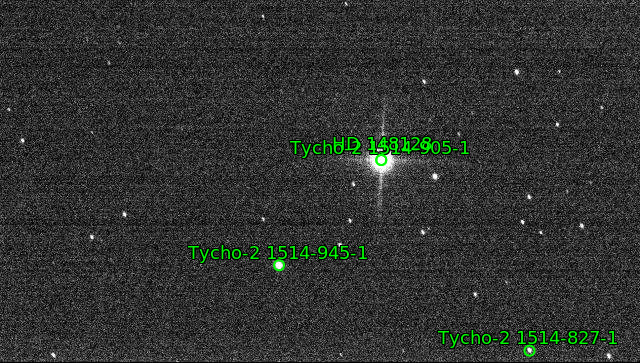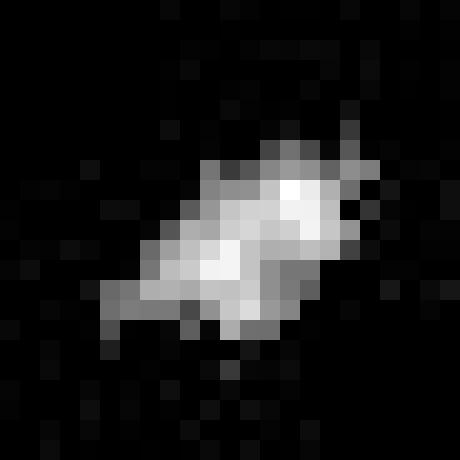Two Infinities
Wed, 10 Jun 2020
Using plate solver as a star hopping check
The evening of May 18 I was trying to split a double star as a sanity check on seeing measurements I was taking. Canadian weather had predicted poor seeing (https://weather.gc.ca/astro/seeing_e.html) despite the clear skies. From this and the constraints of my equipment I decided to look for a pair separated by about 2 arcseconds. Hercules was high in the sky and double star Struve 2052, near the front knee, is an evenly matched double with 2.3 arcseconds of separation. Gear was an 8" equatorially mounted push-to Newtonian telescope with a ZWO ASI camera which meant that I needed to star hop over. STF 2052 is relatively faint a 7.7 magnitude so it was a challenge for a beginner like me.
I found my way to Gamma Hercules and thought (mistakenly) I had found the double but was unable to split the pair. I chalked it up to seeing conditions, but as a precaution captured a 1 second exposure, long enough to provide a plate solver sufficiently many stars to determine location. The next morning I uploaded the image to the amazingly nice Astrometry.net. Luckily the solution came back quickly, but, unfortunately, it was difficult to read the annotation since both Tycho and Draper identifiers were written in the same place:

Luckily, Astrometry.net also provides data in text format as well (cf. http://astrometry.net/doc/net/api.html). In my case the XML snippet of annotations looked like this:
{"annotations": [{"type": "HIP", "names": [""], "pixelx": 1153.8204358390917, "pixely": 484.50643604007297, "radius": 0.0},
{"type": "HIP", "names": [""], "pixelx": 455.0254442348971, "pixely": 842.2364142131472, "radius": 0.0},
{"type": "tycho2", "names": ["Tycho-2 1514-945-1"], "pixelx": 844.7352480090982, "pixely": 803.0079527404176, "radius": 0.0},
{"type": "tycho2", "names": ["Tycho-2 1514-905-1"], "pixelx": 1153.8444483449232, "pixely": 484.5007752543975, "radius": 0.0},
{"type": "tycho2", "names": ["Tycho-2 1514-827-1"], "pixelx": 1601.7812911350134, "pixely": 1060.7429318451464, "radius": 0.0},
{"type": "hd", "names": ["HD 148128"], "pixelx": 1153.844500937562, "pixely": 484.50072816016404, "radius": 0.0}]}
Actually, there was an even more direct approach available. Once Astrometry.net succeeds in solving an image, it regenerates the image into a new FITS file and adds the WCS coordinates of each pixel to the FITS header. Using this information, one may view the image in a FITS viewer and see the right ascension and declination of the pixel underneath the mouse pointer.
The next night, May 19, under similar skies I was better able to match the star chart to what I was seeing in the finder scope and split the double star--at least in the sense of distinct separate bright spots. In this photo, pixels subtend just under .5 arcseconds along the edge, .7 along the diagonal. A little over 3 diagonal distance between bright spots corresonds to an angular separation of 2.3 arcseconds, and the diminution of intensity between the bright spots verifies that seeing was no worse than 2.3 arcseconds.

Using my home-baked differential image motion monitor (Sarazin & Roddier, Bally et al), seeing was in the neighborhood of 1.72 full width half maximum in the same location at about the same time.
Many thanks to Mark Cornell for suggesting this comparison.
posted at: 10:16 | path: | permanent link to this entry
